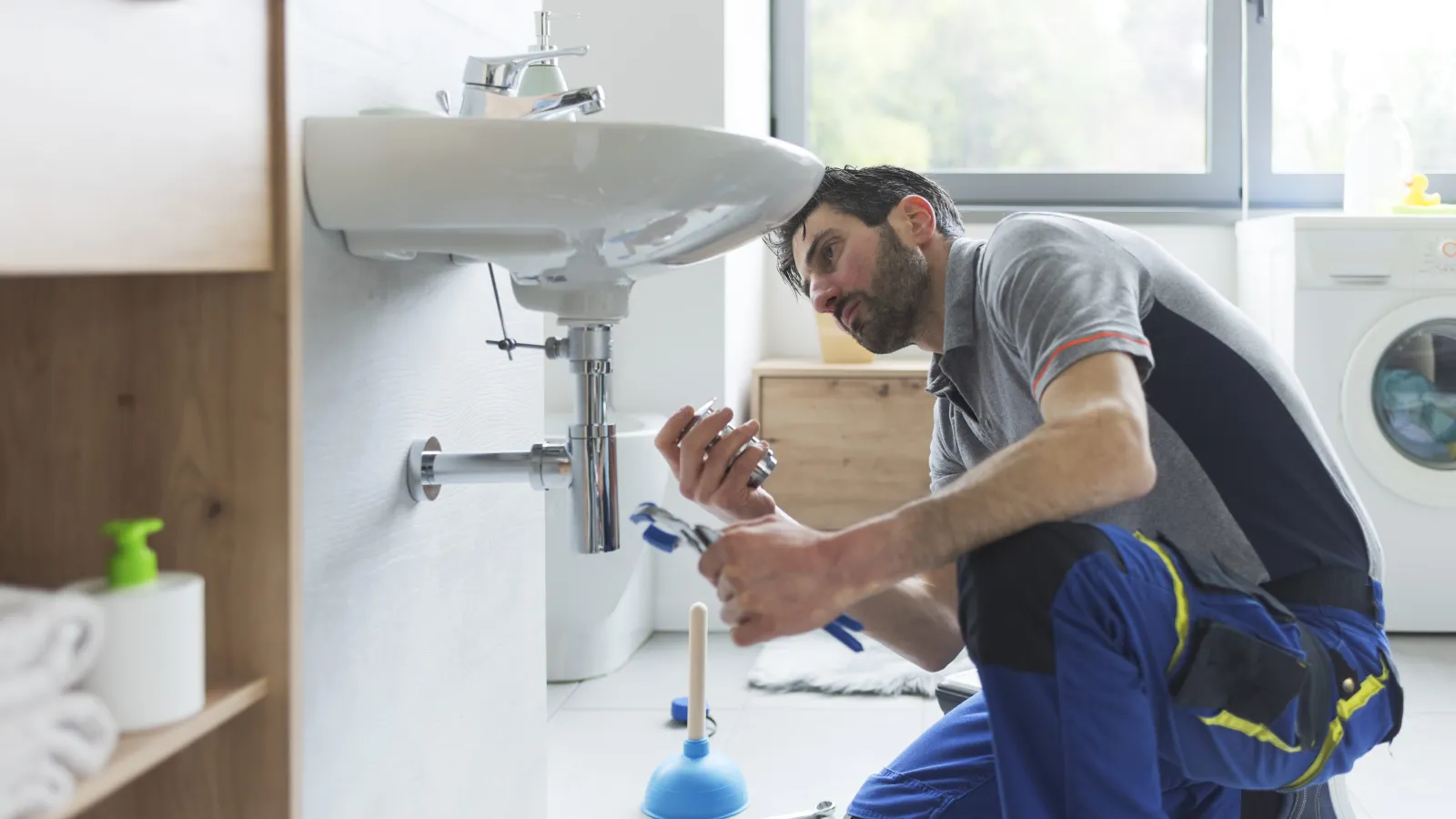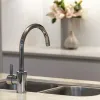What do you do when the water won’t drain, and you think you’ve got a clog?
It might be your tub. It might be a toilet. Or a kitchen sink.
Maybe it’s more than one of those.
Regardless, there’s something going on in your pipes. You’re not sure what the problem is–or how to address it.
Diagnosing drain clogs
The first thing to do is to not panic.
You might have a localized clog (meaning it’s near your plumbing fixtures), or you might have a sewer line blockage. Or sewer line damage. We don’t know yet, but all of these problems are solvable.
The next step is to ask yourself this question:
Do I have one clogged drain, or multiple clogged drains?
A single clogged drain–especially if it’s a bathroom sink or shower–could mean there’s a clump of hair near the drain itself. There’s a good chance you can solve this problem on your own!
If both sides of your kitchen sink are clogged and you’re not experiencing other weird plumbing issues around your home, you probably have a clog near the kitchen drain. A sink plunger, a plumber’s snake, or a p-trap clean out could solve the problem. If you’re not comfortable with those tasks, it’s time to call a plumber.
However, if you have more than one clogged drain (for example, the kitchen sink and a bathroom sink or toilet), you might have a sewer line problem.
Note: If you think you have a clog in the sewer line, it’s important not to run any water. Turn off your water supply to prevent more severe problems, like sink or toilet overflow or sewage backup through a drain.
A plumber who specializes in sewers and drains will need to diagnose the issue.
Steps for identifying drain clog causes
So you’ve concluded you need to phone a plumber to figure out what’s going on with your drains. Here’s how a drain and sewer specialist will proceed:
1. Assess the drain problem
Upon arrival, a plumber will determine whether you’ve got an inside clog or a sewer line clog.
There are different ways to do this. One way is to see if the clog affects multiple plumbing fixtures.
Here’s an example. Let’s say the kitchen sink is clogged. First, we’ll see whether both sides back up. If they do, we know it’s probably just a clog near the kitchen sink–not a sewer line issue.
But let’s say a tub is backed up. If we fill up the toilet and it starts bubbling, there’s a high likelihood that the problem is somewhere deeper in the sewer line. Otherwise, it wouldn’t be affecting multiple fixtures at the same time.
The other way–and, really, this is more of a sure thing–is to inspect the sewer line with a camera. That way, we can identify any clog, sewer pipe damage, or tree root intrusion that is preventing the flow of wastewater.
2. For localized clogs, use the best tool for the job.
If the clog is located near the plumbing fixture (i.e. not in the sewer line), your plumber might use a plunger to move the blockage or a plumber’s snake to break it up.
To run the snake, your plumber will typically need to remove the p-trap beneath a sink first. From there, they’ll have better access to the drain line and will be able to more easily get to the clog.
If the clog is in your sewer line, the process is different.
3. For sewer line clogs, bust the clog, repair the line, or…
It really depends on what the sewer camera inspection reveals. There are a variety of potential sewer line problems that can cause your drains to back up. Here are the most effective remedies for different issues:
- Hydro jetting: If the camera shows a mass that’s blocking the line, hydro jetting your sewer pipe is often the best solution. Here, your plumber sprays a high pressure stream of water into the line, which physically destroys whatever is causing the blockage.
- Trenchless repair: This is a go-to solution for small cracks in the sewer line. It involves placing a fiberglass patch over the crack. The patch hardens and seals the crack, which stops the leak and prevents wastewater backup, clogs, and other issues. The best part is that it’s a non-invasive way to address sewer line damage.
- Excavation and replacement: Sometimes, a camera inspection will show significant damage to the sewer line. This might be damage from tree roots, a belly or sagging area of the sewer line, or a complete collapse of the pipe. Essentially, a sewer specialist removes the damaged section of pipe and replaces it with a new pipe. This is the solution when trenchless repair isn’t possible due to extensive damage to the sewer line.
Steps for avoiding future drain blockages
Clogs typically happen when something other than water, waste, or toilet paper ends up in your pipes.
To prevent clogs in your drain or sewer line going forward, avoid flushing these items or otherwise sending them down the drain:
- Wet wipes: This includes supposedly “flushable” wipes. Don’t believe the packaging! All types of wipes, baby or otherwise, can clog your sewer line. Just use toilet paper or throw the wipes in the garbage.
- Feminine hygiene products: These need to go in the trash as well.
- Cooking grease: If you’re in the habit of pouring this down the drain, please find another solution! It’s better to pour it in a container and throw it away after it has cooled. When you pour it down the drain, it hardens inside your sewer line and causes blockages.
- Large food scraps: Garbage disposals are great for small, soft bits of food. Things like fruit peels and potato skins are too large and tough for your kitchen drain and often get stuck there. Just compost them or throw them out.
Concerned about a clog in your drain? Here’s what to do!
If you live in Metro Atlanta and are having drain line problems, PV Heating, Cooling & Plumbing can help!
Our drain and sewer specialists will visit your home, inspect your drain and sewer line, and diagnose the problem. From there, we can point you to the best possible long-term solution–so you can stop worrying about your pipes!
We offer free sewer camera inspections, so you know if something is blocking your sewer line and what it is.
Let’s solve your drain problems ASAP! Give us a call today at (404) 798-9672 or schedule service online!





